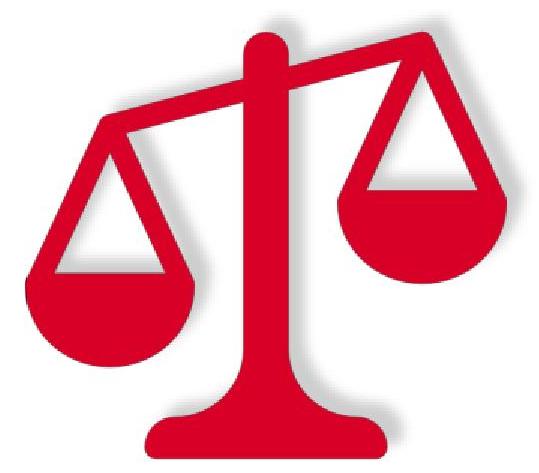Are you tired of making hasty decisions that often lead to unfavorable outcomes? If so, we have the solution for you. Step into the captivating world of “Thinking, Fast and Slow” and discover the illuminating insights it offers on different modes of thinking and decision-making. While our thought processes may seem seamless and automatic, they are far from infallible. By understanding the dichotomy between fast, instinctive thinking and slow, deliberate reasoning, we can unravel the mysteries behind our choices, ultimately empowering ourselves to make wiser decisions. Join us on this intellectual journey as we delve into the captivating realms of cognition and examine the profound discoveries made by Nobel laureate Daniel Kahneman. Let’s embark on a compelling exploration that will forever change the way you perceive your own thinking and decision-making abilities.
The Importance of Understanding the Two Modes of Thinking
When it comes to decision-making and problem-solving, understanding the two modes of thinking can be a game-changer. These two modes, known as intuitive thinking and analytical thinking, play crucial roles in our cognitive processes and can significantly impact the outcomes of our choices. By recognizing and harnessing the power of both modes, we can enhance our problem-solving skills, make more informed decisions, and ultimately lead more successful and fulfilling lives.
- Intuitive Thinking: This mode of thinking relies on our gut instincts, emotions, and personal experiences to navigate through complex situations. It allows us to take quick, spontaneous actions without explicitly analyzing the underlying reasons. Intuitive thinking is valuable when faced with time constraints or when dealing with familiar situations that require instinctive responses.
- Analytical Thinking: On the other hand, analytical thinking involves systematic and logical reasoning. It necessitates a more structured approach, carefully examining the facts, data, and evidence at hand. Analytical thinking enables us to evaluate multiple perspectives, consider potential consequences, and make well-informed decisions with reduced biases.
By acknowledging the significance of both intuitive and analytical thinking, we can broaden our problem-solving toolkit and adapt our approach to different situations. Utilizing intuitive thinking can help us tap into our creativity, allowing for innovative solutions. At the same time, analytical thinking serves as a valuable check, ensuring our decisions are based on sound logic and objective analysis.

Recognizing the Biases and Limitations of Our Intuitive Thinking
Our intuitive thinking, while quick and effortless, is not without its faults. It is crucial for us to acknowledge and recognize the biases and limitations that inherently exist within it, in order to make more informed decisions and avoid potential pitfalls. One of the most significant biases embedded in our intuitive thinking is confirmation bias. This cognitive bias tempts us to search for, interpret, and remember information that aligns with our existing beliefs, while disregarding contradictory evidence. It can lead us down a dangerous path of narrow-mindedness and hinder our ability to consider alternative viewpoints or explore new ideas.
Additionally, our intuitive thinking often suffers from cognitive limitations, such as availability heuristic and representativeness heuristic. The availability heuristic prompts us to judge the likelihood of an event based on how easily we can recall similar instances from our memory, rather than relying on statistical or factual evidence. This shortcut can lead to flawed judgments and erroneous conclusions. Similarly, the representativeness heuristic, which involves categorizing or judging something based on how closely it resembles a stereotype or prototype, can lead us astray when we overlook underlying probabilities or base our judgments solely on superficial similarities.
:
- Confirmation bias: The tendency to favor information that aligns with our existing beliefs and disregard contradictory evidence.
- Availability heuristic: Making judgments based on how easily examples come to mind rather than considering statistical evidence.
- Representativeness heuristic: Categorizing or judging something based on its similarity to stereotypes instead of considering underlying probabilities.
Awareness and understanding of these biases and limitations can help us question our intuitive judgments and approach them with greater caution. By actively seeking out diverse perspectives, challenging our own preconceived notions, and relying on factual evidence, we can mitigate the harmful impact of our biases and make more informed decisions that consider a broader spectrum of possibilities.
Harnessing the Power of Slow Thinking for Effective Decision Making
In a fast-paced world where snap judgments and quick decisions seem to be the norm, it’s time to embrace the power of slow thinking for more effective decision making. Slow thinking involves deliberation, careful consideration, and mindful analysis. By taking the time to slow down and think deeply, we can avoid impulsive choices and make decisions that are based on sound reasoning and accurate information.
One key advantage of slow thinking is its ability to alleviate cognitive biases that often cloud our judgment. When we rush through decision-making processes, we are more prone to fall victim to biases such as confirmation bias, availability bias, or anchoring bias. By deliberately slowing down our thinking, we can identify and challenge these biases, allowing us to make decisions based on a more objective assessment of the situation.
- Enhanced problem solving: Slow thinking gives us the opportunity to thoroughly analyze a problem, break it down into its components, and consider multiple perspectives before arriving at a solution.
- Reduced likelihood of errors: Rushed decisions often lead to mistakes and oversights. By embracing slow thinking, we can minimize errors and ensure that our decisions are well thought out and rooted in logic.
- Increased creativity: Slow thinking allows for deep reflection, enabling us to think outside the box and come up with innovative solutions that may not have been apparent in a rushed decision-making process.
So, let’s break free from the grips of haste and embrace slow thinking as a valuable tool in our decision-making toolkit. By harnessing the power of thoughtful deliberation, we can make better choices, avoid costly mistakes, and achieve more favorable outcomes in both our personal and professional lives.
Practical Strategies to Enhance Critical Thinking and Minimize Cognitive Errors
In a world bombarded with an overwhelming amount of information, it has become increasingly vital to sharpen our critical thinking skills and protect ourselves from cognitive errors. By employing the following strategies, we can navigate through the noise, make sound judgments, and arrive at well-informed decisions.
- Question Assumptions: One of the key steps in critical thinking is challenging the assumptions we make. By consciously questioning our preconceived notions and biases, we can uncover hidden details and alternative perspectives that may have been overlooked. This process not only helps in gaining a deeper understanding of the subject matter but also aids in avoiding generalizations and oversimplifications.
- Seek Diverse Perspectives: Engaging with diverse viewpoints broadens our mental horizons and enables us to see the entire picture rather than just one narrow viewpoint. Actively seek out individuals with different backgrounds, beliefs, and experiences to gain a holistic understanding of the topic at hand. This not only minimizes cognitive biases but also fosters empathy and understanding, leading to more comprehensive and insightful analysis.
- Evaluate Sources Critically: With the prevalence of misinformation, it is crucial to critically evaluate the credibility of sources before accepting information as truth. Scrutinize the authority, reliability, and objectivity of the sources, and cross-verify facts from multiple reputable sources. Additionally, be mindful of confirmation biases and avoid relying solely on sources that confirm preexisting beliefs.
By diligently implementing these practical strategies, we can fine-tune our critical thinking abilities and minimize cognitive errors, enabling us to make well-informed decisions in an increasingly complex world. In a time when misinformation and biases often cloud our judgment, ensuring we approach every situation with an open and analytical mind can empower us to navigate the complexities of life with confidence and clarity.
To Wrap It Up
In conclusion, understanding the intricacies of human thinking and decision making plays a crucial role in our daily lives and professional endeavors. Through the insightful work of Daniel Kahneman in “Thinking, Fast and Slow,” we have been enlightened by the dual systems that govern our thought processes. By recognizing the characteristics and biases of both System 1 and System 2 thinking, we can leverage their strengths and overcome their limitations to make more informed and rational decisions.
The implications that arise from this exploration of thinking modes are profound. We are reminded that our initial intuitions, while valuable at times, can be clouded by biases and heuristics that lead to errors. On the other hand, our analytical and deliberate thinking processes often come at the cost of time and effort. Understanding these trade-offs allows us to adopt a more balanced approach when navigating complex choices and dilemmas.
Moreover, the knowledge gained from Kahneman’s research has practical applications across various fields. From economic theories to organizational behavior, psychology to public policy, we are presented with an opportunity to enhance our decision-making abilities and create more effective strategies. By incorporating insights from “Thinking, Fast and Slow” into our areas of expertise, we can drive positive change and achieve greater success.
It is important to recognize that this journey towards better decision making requires self-awareness, practice, and a willingness to challenge our own biases. By questioning the automatic responses of System 1 and engaging in deliberate thinking with System 2, we can transcend the limitations imposed by our cognitive processes.
In a world where information overload and snap judgements are prevalent, the ability to make sound decisions becomes a competitive advantage. By embracing the lessons from “Thinking, Fast and Slow,” we can navigate the complexities of our lives with increased wisdom and clarity. Let us acknowledge the power of understanding our thinking modes and commit ourselves to making better choices that will shape a brighter future.
Humans are constantly faced with decisions that require us to think carefully and weigh our options. While some decisions are quick and unconscious, other decisions are deliberate and require deep contemplation. In his book Thinking, Fast and Slow, Nobel Prize-winning psychologist Daniel Kahneman examines and compares the two modes of thinking and decision making that most people usually use.
Kahneman identifies two distinct ways of thinking: “System 1” and “System 2.” System 1 is fast, instinctive, and emotional. It is responsible for most non-deliberate decisions and can be seen as our “default” mode of thinking. System 2, which Kahneman calls the “slow” system, is more analytical and conscious. It is associated with reasoning, problem solving, and making deliberate decisions.
Kahneman argues that System 1 is more prone to cognitive bias and mistakes in judgment. Because it is so fast and based on instinct, decisions made with System 1 can be flawed due to our preconceptions and limited knowledge of a situation. On the other hand, System 2 is more objective and comprehensive. By taking the time to analyze the situation and draw on our knowledge and experiences, our decisions become more reasoned and accurate.
Kahneman’s insights into the two modes of thinking are invaluable for understanding human behavior and decision making. By understanding the strengths and weaknesses of both System 1 and System 2, we can make more informed decisions and limit the impact of cognitive bias. In this way, we can increase the accuracy and effectiveness of our decision-making processes.

